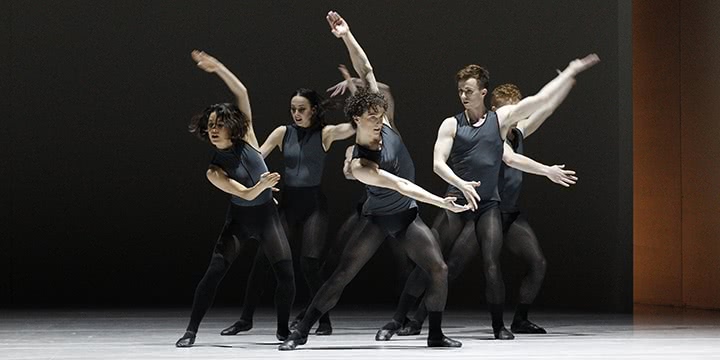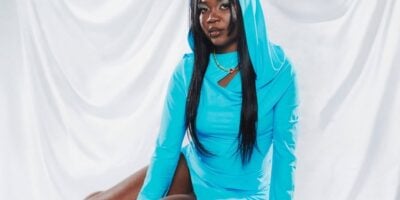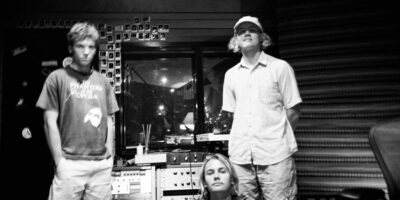Tim Harbour has found himself in a rather impressive sandwich. After working with the company for 15 years, the Australian Ballet resident choreographer’s latest work is premiering as part of the contemporary triple bill,20:21.
In addition to having a wonderful name, Harbour’s Filigree And Shadow will find itself bookended by George Balanchine’s Symphony In Three Movements and Twyla Tharp’s In The Upper Room, both hugely celebrated pieces that have set the bar at a daunting height. Harbour, however, is more than ready to meet the challenge. He hopes.
“I knew In The Upper Room quite well since I’d done it myself as a dancer, and I was familiar with Balanchine. So I had an idea of what the program was going to look like, which mostly made me think, ‘Jesus, this has to be really, really good!’” he laughs. “These are two amazing works, two huge hits from master choreographers, you already know they’re going to work. Both have also had very powerful music, and so I commissioned this electronic duo, 48nord from Germany, knowing these were guys who could produce something that could hold its own between [respective composers] Philip Glass and Stravinsky. That’s no small call for any composer, but they’ve done it. So I had the idea of what I was going to be sandwiched between, and it was pretty intimidating, but it certainly spurred me on.”
Harbour worked for the better part of a year on preparing Filigree And Shadow, gradually developing the tone and movements on his own before unveiling them to the company dancers in order to evolve yet again. As resident choreographer, you suspect he is in a rather unique position to develop fresh phrasing given his access to the almost preternatural talent The Australian Ballet has to offer, with dancers like coats in a wardrobe he can don for a time to see what develops.
“I tried to have as few agendas as possible. ‘Oh, this particular manoeuvre will suit this particular dancer’ – I tried not to think like that. The vast majority was done way before I got the dancers. That wardrobe with those coats, I really only got access to it in the last few weeks before the show opens. I generated a huge amount of choreography on my own, and filmed myself as a very rough starting point. I built up all this material, and as I got closer and closer to that four-week rehearsal period, I started to categorise certain phrases, worked out where things would fit together. And then you get into the studio with the dancers, all of whom are much younger and better than I, and they then can put a different spin on it. They can do it with more largesse, they’re quicker, so those phrases I’d worked on change as the dancers work with them, and I can start to assemble them in different ways.”
While youthfulness and professional dancing do go somewhat hand-in-hand, it is not like dancers slink off into the shadows after their stage career, never to be seen again. Many move into choreography or teaching (though as Harbour points out, some also move into stockbroking and real estate). Many also succumb to the intense physical demands of dance, though in Australia the tendency to continue performing throughout injury seems significantly lesser than international companies (as the Royal Ballet’s podiatrist Peter Norman can attest). Young dancers pushing themselves beyond their capabilities is a real concern for Harbour, and one that has become more pronounced than ever before.
“The idea of the dance star in popular culture has grown, especially because of the prevalence of dancers now on television. But even so, those people are pretty fleeting, aren’t they? They come and go. We might have a moment of considering whether we’re going to vote them off a certain show, but in terms of long-term fame it doesn’t really translate. I think they’ve impacted dance schools, for better or worse. I think there are a lot more kids getting into dance, and that’s a good thing. I think some of the stuff the dancers do in those shows can sometimes be pushed on young kids too soon, before their bodies are ready, and it could lead to injury without rigorous training. I think some of those shows have led to some schools pushing certain choreography too soon.”
Filigree And Shadow promises to be a highly energetic, muscular performance, and while the dancers will no doubt be pushing the limits of how their bodies can move, there is nothing injurious to their performance. This is despite the underlying psychology of the piece, which as Harbour emphasises has its genesis in aggression.
“Right from the very beginning, I wanted this work to be a release from aggression. Where that personal aggression comes from specifically is a little incidental. I think everybody can relate to those ideas of anger and frustration, or even aggression as a form of being brave. That was the core idea, so all of the phrases, I conjured up this aggressive emotion inside myself, and that’s where the movement came from.
“I think that’s visible onstage, and that was the information I gave the dancers: ‘I want this to be like a rock star smashing their guitar at the end of the concert – I want that kind of release.’ And they really grabbed hold of that and produced something fantastic.”
[20:21 photo by Jeff Busby]
20:21 runsThursday November 5 – Saturday November 21 atJoan Sutherland Theatre, Sydney Opera House.


































